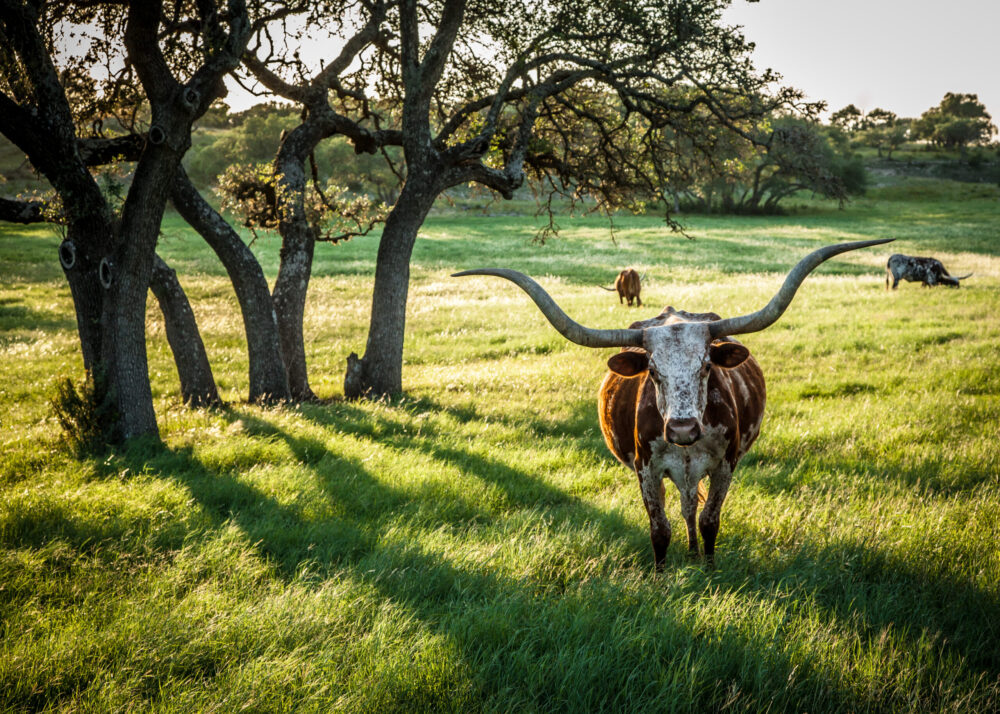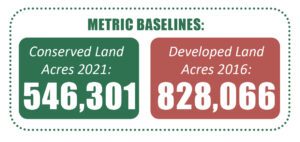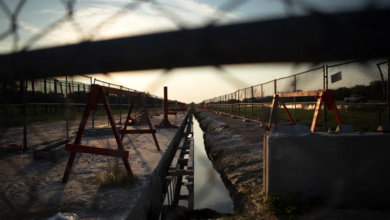
Op-Ed: Open space is the key to keep the Hill Country thriving
Frank Davis | Chief Conservation Officer at Hill Country Conservancy
Anyone who is familiar with the natural areas of the Texas Hill Country will attest to their beauty and wondrous nature. Crystal clear spring-fed streams, steep canyons and bluffs, majestic forests, and wildflower-laden savannas dotted with oak trees are common sites in this region.
These lands boast long and distinctive histories, beginning with Indigenous peoples living off the land and its abundant wildlife and establishing sacred sites at the springs. Since then, many early Texans settled here, and there are still countless farms and ranches under the same family ownership, as well as those who moved here more recently to cherish the land’s beauty and recreational value. These original stewards ensured the richness of the land would remain for future generations.
We benefit from their efforts today when we escape to the hills and waterways to immerse ourselves in the sense of peace and rejuvenation that only nature can give. But more importantly, we benefit each time we turn on the tap, knowing clean water will be there on demand. These natural lands filter our water and dramatically reduce treatment costs. They also hold back floodwaters, protecting people and property downstream. And they preserve our precious night skies and native Texas wildlife.
But our Hill Country and all of its blessings are in peril. It is a textbook case of “killing the goose that laid the golden egg”. How is this happening? Well, thanks to our booming economy, rich natural resources, and unique way of life, hundreds of people are moving to the Hill Country every day. We’re each a part of this. We need roads to drive on, schools for our kids, and hospitals for when times get tough. Yes, people need stuff, and that “stuff” is starting to take its toll.
In the Hill Country, there is no regional planning to guide where things belong—and where they don’t. As the region grows, those same landowners who have been caring for all that we love about the Hill Country are faced with tough questions: How will we keep this place intact and profitable while paying for road and fence improvements and upkeep of agricultural equipment and infrastructure? If we pass it down to our kids, will they see it as a blessing and care for it as we would hope? Or will they sell it to the highest bidder? Why are we staying here while everything around us is changing?
Thankfully, there are tools that can help landowners to stay on their land and keep caring for it. Of those tools, the conservation easement is among the most effective. A conservation easement is an agreement between a willing private landowner and, in many cases, a nonprofit land trust.
A conservation agreement is carefully crafted to serve the public interest of preserving water, wildlife, soils, scenic views, and long-term productivity while ensuring the landowner can continue to live, recreate, graze, farm, hunt and fish on their land. Landowners voluntarily choose conservation easements because they love the land and want their legacy of stewardship to continue for generations to come. There are also estate and income tax incentives to consider, and for some critical properties, cash payments are made for conservation easements.
One timely example is the Kordzik-Sheppard Ranch whose family owners are now celebrating more than 150 years on their 730 acres in Gillespie County just a mile and a half from downtown Fredericksburg. In recent years, they watched their hometown transform into a buzzing tourism destination and wine industry hub, and they witnessed many of the properties around them be subdivided and sold off as single-family home lots. Increased real estate values prompted other family members to sell off their land. These changes prompted the family to reach out to Hill Country Conservancy (HCC) regarding a conservation easement.
The Kordzik-Sheppard Ranch is in the Pedernales River basin, which provides approximately 23% of the water flowing into the Highland Lakes, a critical drinking water resource for the region. “Prime” agricultural soils on the property are highly beneficial for both agricultural production and wildlife. Varied habitat types on the ranch include healthy forests and grasslands as well as a rare mix of oaks and hickory trees. The landowners have a long history of activities which benefit all of these precious resources.
HCC is part of a collaborative effort funded by the USDA’s Regional Conservation Partnership Program, which provides funding to private landowners for beneficial land management as well as long-term protection. The many partners in that effort agreed that Kordzik-Sheppard Ranch was a priority, thus ensuring funding to purchase a portion of the value of the conservation easement with the landowners generously donating the remaining value.
HCC and the landowners have now confirmed the terms of the conservation easement agreement, and at the time of this writing, they expect to celebrate their new “marriage” in the coming weeks. The owners remain the primary caregivers of their land, while HCC ensures, on behalf of the public, that the land remains intact and undeveloped except for a few homes on their 730 acres.
As of now, there are nearly 550,000 acres of conserved lands in the Texas Hill Country. A large portion of these lands are protected by conservation easements like the one on Kordzik-Sheppard Ranch. Many of these were donated by charitable private landowners, and some cities and counties have helped to finance the purchase of conservation easements through widely supported conservation bond referendums and sales tax revenues.
In Travis and Hays County, bond referendums have led to a total of $633 million invested in land conservation. In large part due to such programs, Hays County has now protected 9% of its land mass, which tracks closely to the 9% that’s been developed to date, a model for the region. Travis County has used bonds in Austin and at the county level, as well as a regional Habitat Conservation Plan, to finance the protection of 14% of its land. Citizens in San Antonio voted four times to approve the Edwards Aquifer Protection Program, which allocates one-eighth of one cent from local sales tax to protect its primary drinking water source, with much of its investment going to lands over the recharge zone in Uvalde County where an impressive 12% of land has been preserved.
On the other hand, Comal County, with ecotourism and hunting being primary economic drivers, thanks to its abundance of natural areas, waterways, and swimming holes, has invested very little to date. Whereas 13% of its land has been developed, only 4% is protected for future generations. But there is hope. The county has recently submitted a preliminary application for a low-interest rate loan through the Clean Water State Revolving Program which would fund future conservation efforts. Perhaps this is the first step towards making much-needed investments in preserving the county’s natural resources, recreational opportunities, and economic future.
In addition to conservation easements on private lands, there are myriad public parks in the Hill Country which provide important recreational opportunities, but they are strained for resources and capacity, with many reservation systems booked weeks or months in advance. We owe it to our kids, grandchildren, and great grandchildren to make sure they have places to escape from the busy city life to recreate and rejuvenate.
Although Texans are innovative and determined, we are lagging behind many places in the U.S. when it comes to protecting our precious natural areas. It’s time to put our tools to use before it’s too late.
Frank Davis is Chief Conservation Officer at Hill Country Conservancy, a founding Steering Committee member for the Texas Hill Country Conservation Network, and former board member of the Texas Land Trust Council.






